Welcome to the AT3 Ultimate AR-15 Guide! We’re sharing the knowledge we’ve all gained over the years of making our own AR-15 mistakes, so you don’t make them on your own AR … because, trust us, that sucks.
If you were to guess how many swappable parts you have on your AR-15 …what’s your guess? If you answered more than 30, you’re pretty darn close! Luckily for you, whether it’s your first time building or buying an AR-15 or even your second or third, we’ve compiled a MOUNTAIN of AR-15 information.
So, get your popcorn ready and your best optical “cheaters” on, it’s time to breeze through the easiest AR-15 Guide you’ll ever meet. Here-We-Go!
Table of Contents
AR-15 Basics: 7 Reasons You Want One
The AR-15 is iconic for good reason. This modular semi-auto rifle dominates as America’s top-selling long gun. Customizable and versatile, it’s chambered for the common 5.56 NATO but can adapt to multiple calibers. With low recoil and high accuracy, the AR platform offers reliable performance that makes it a blast to shoot!
- Low Recoil: Perfect rifle for beginners.
- Dependability: Battle-proven design, easy to maintain.
- Accuracy: Tight groupings at a variety of distances.
- Magazine capacity: Standard AR-15 magazines hold 30 rounds of .223/5.56.
- Portability: Aluminum & polymer components reduce weight; collapsible stock reduces length.
- Ease of Operation: Ergonomic controls and suitable for right- or left-handed shooters.
- Modular Design: The AR-15’s modular design allows endless customization to suit any need.
Buying vs Building an AR-15
Today, you get two choices for your first or next AR-15. Build one entirely from scratch, or grab an off-the-shelf AR. In many cases…off the shelf can wind up being lighter on the wallet. Brands like Smith & Wesson and their M&P Sport II rifle, Ruger with their AR556, or Springfield with the Saint series. Any would make a great do-all rifle.
Buying “pre-made” may be cheaper, but building an AR15 will ALWAYS get you what you want at the end.
Just bought one? We have a rundown on how every control works and what makes them tick!
Looking to build an AR? Unsure where to start? Schedule a FREE build consultation with our experts!
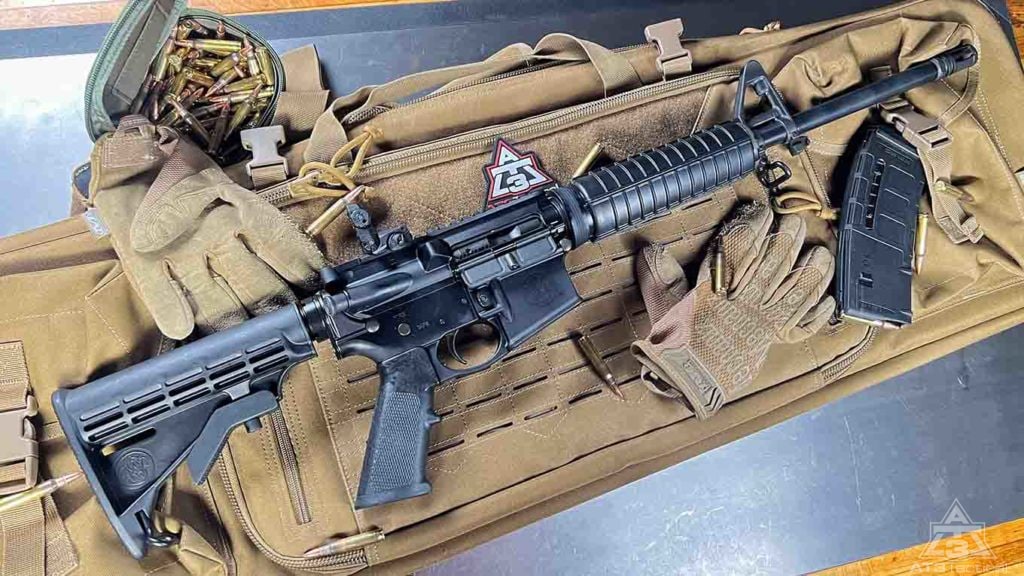
More AT3 AR-15 Rifle Content:
- Ultimate Smith & Wesson M&P15 Upgrade Guide
- AT3’s Guide to Smith & Wesson M&P15-22 Upgrades
- Guide to Upgrading Your Springfield Armory Saint
- Best Ruger AR-556 Upgrades + Accessories
- Guide to Upgrading your Colt LE6920
- Building an AR-15 or AR-10. What Parts Are Compatible?
- M4 vs AR-15 vs M16 – The Ultimate Guide to AR-15 Types Plus A1, A2, A3, A4 M16 Variants
- How to Buy a Gun – A Step-By-Step Guide for First-Time Buyers
- A Step-By-Step Guide on How to Buy a Gun Online
AR-15 Parts & Pieces
The AR-15 is built on an adaptable, mix-and-match platform. It is easy to swap out parts or disassemble for cleaning and maintenance.
Let’s cover the 2 main assemblies – the upper and lower receiver groups – and then common accessories like sights, optics, magazines, and more. Looking for the US Army’s maintenance manual? Check out our FREE Army Service Manual for the AR-15/M4/M16!
The AR-15 Upper Receiver Assembly
The upper receiver houses the inner workings of the rifle. It is the “upper” portion of the gun. This will receive your barrel, bolt carrier group, charging handle, forward assist, dust cover, handguard, gas system, and muzzle device
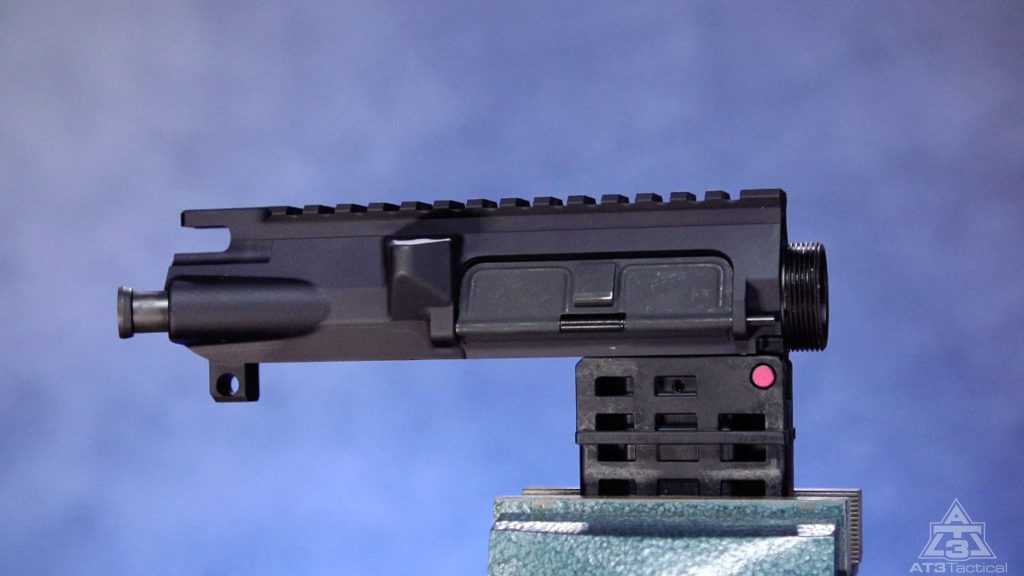
If your bolt has trouble going into battery (fully seating in the barrel chamber), a handy push button called the forward assist is found on the side of most AR-15 pattern rifles and can be punched, pressed, or kicked in order to get things working.
Forward assists are a much-debated topic since they arguably do not offer a great deal of “real-world” sportsman usage. If your AR is having trouble, maybe check them out instead of resorting to the big button.
The AR-15 Barrel
When it comes to the AR-15, the barrel is arguably the most important part as it directly impacts accuracy and reliability. As for what to look for in your AR barrel, you really can’t go wrong with a standard mil-spec barrel – they just work great for most folks. AR barrels are available in countless other options of calibers, profiles, metals, and coatings, but don’t get too wrapped up in those details now. We’ve got a TON of AR-15 barrel content below to put any concerns to rest.

Although you do have tons of barrel options to customize your AR-15 build… Just remember to keep legal requirements in mind – as of today rifle barrels need to be at least 16 inches. Choosing shorter barrels means you’ll be building your AR as a pistol or getting paperwork and money ready for a tax stamp.
Delve into the core of your AR’s accuracy with our more advanced barrel content:
- What is The Best AR-15 Barrel Brand?
- Best AR-15 Barrels
- AR-15 Barrels – AR Barrel Length
- Ballistic Advantage Barrel Review
- Choosing the Best AR-15 Barrel – 5 Things to Consider
- AR-15 Barrels: Profiles, Fluting, and Dimpling
- AR-15 Barrels – Surface Treatments & Muzzle Types
- Building an AR-15 or AR-10. What Parts Are Compatible?
- AR-15 Barrels – Intro, Fundamentals, and Manufacturing of AR-15 Barrels
- AR-15 Barrels: Caliber, Chamber, & the Best Steel Type for Your AR Barrel
- How to Cover Up the “Scarred” Area on AR 15 Barrel After Removing the Front Sight Block
AR-15 Gas Systems
The AR-15 is gas operated. Meaning: it is direct gas impingement operated which requires a gas port in the barrel in order to vent gas after the bullet passes by it. Those vented gasses go into the gas tube and contact the bolt carrier group which is flung to the rear and cycles back forward, picking up another round from the magazine.
A product that has gained popularity is the adjustable gas block since it offers a greater degree of versatility. There are other options such as low-profile gas blocks, picatinny gas blocks, and skeletonized gas blocks to best trick out your AR build!
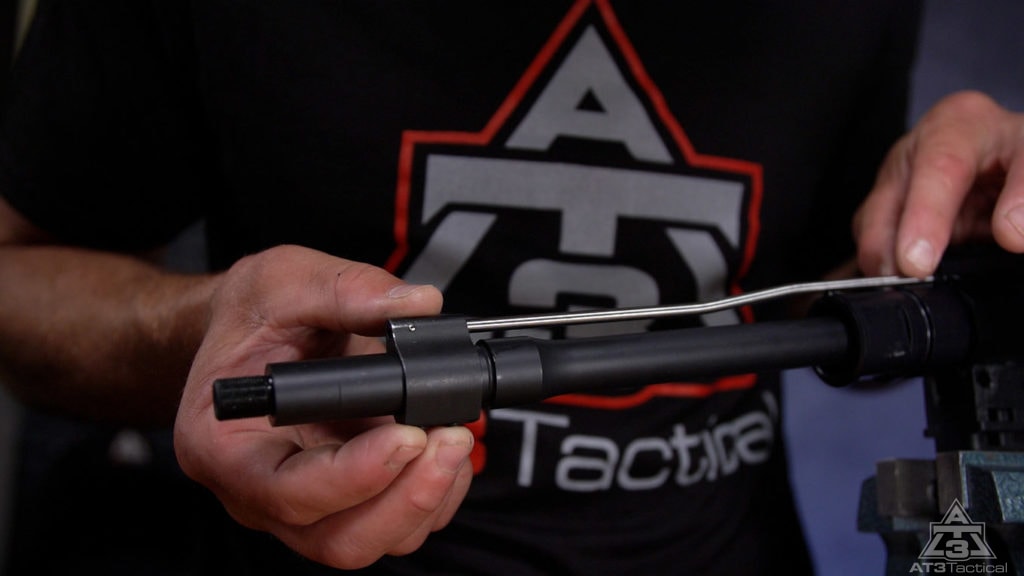
Master your AR’s respiratory system with our advanced gas system content:
AR-15 Handguards
The handguard acts as a protector. Its role is to keep the gas tube from damage as well as a heat shield between the hot barrel and the shooter’s hand.
There are many different types of AR-15 handguards that offer their own pros and cons. The most popular option is the freefloat style handguard. The handguard is commonly used as an attachment point for accessories – flashlights, bipods, and more.

Reimagine your AR’s tactical potential with our ultimate handguard upgrade intel:
AR-15 Bolt Carrier Group
The bolt carrier group is definitely the workhorse of the AR-15 – being a combination of parts handling everything from pulling a round from the chamber, firing the round, ejecting it from the receiver, and picking up another round from the magazine.
These days it is tough to find a “bad” BCG (bolt carrier group). Unless you see a horrendous price difference it’s probably a quality part. For maximum reliability, however, most shooters stick to nickel boron-coated BCGs since they have greater wear resilience, heat tolerability, and friction resistance when things get messy.
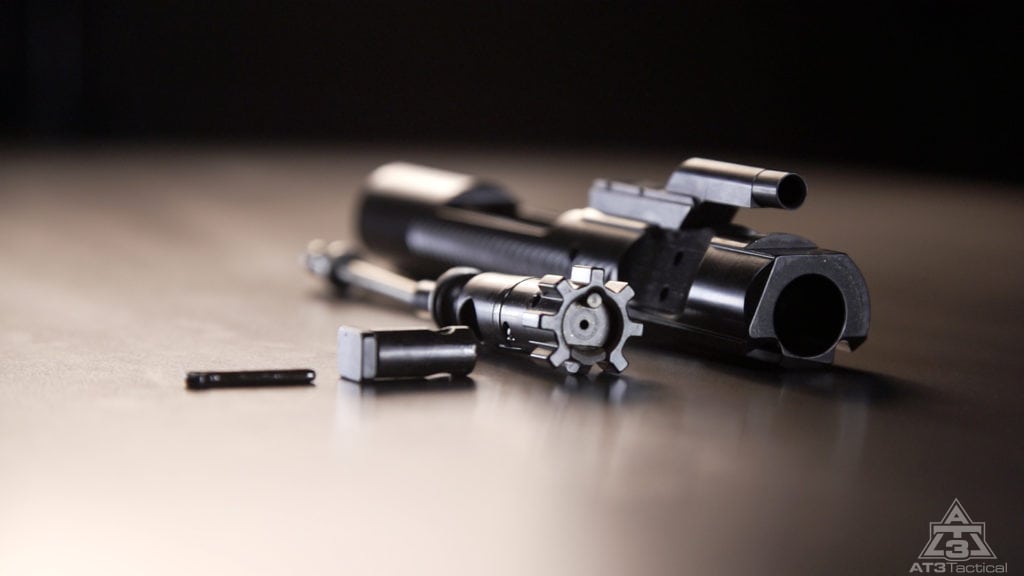
Attached to the AR-15 bolt carrier group would be the charging handle which is responsible for manually pulling the bolt to the rear.
You would be hard-pressed not to roll with the most popular style these days, the ambidextrous charging handle since it does most things very well. There are other options that concentrate on gas mitigation, ease of access, and even right-hand or left-hand only if you have a more personalized or job-specific AR-15 build.
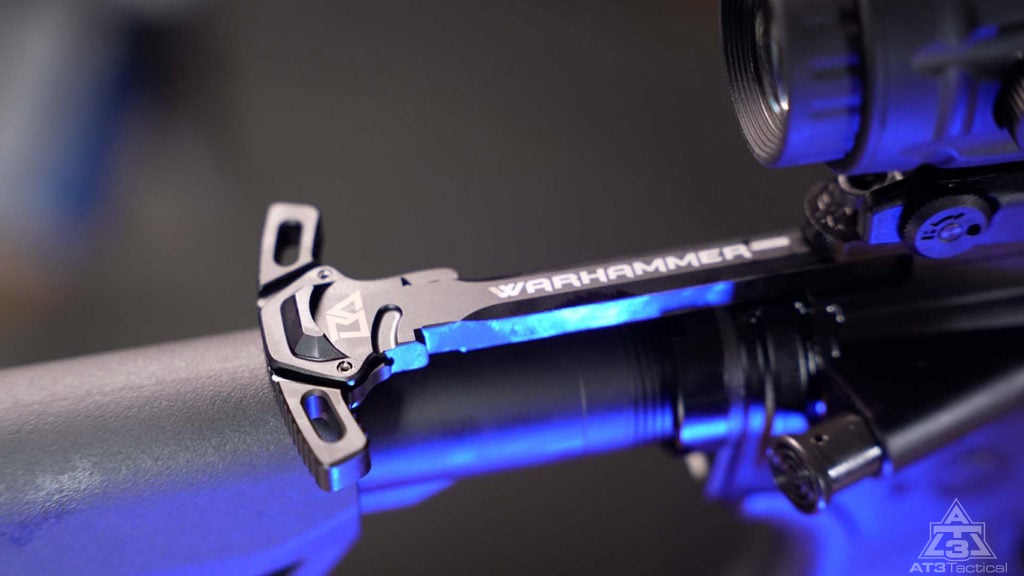
Unlock your AR’s true accuracy potential with our precision upper component intel:
The AR-15 Muzzle Device
The end of an AR-15 barrel is threaded, which allows attachment of a “muzzle device”. Generally, muzzle devices serve one of three purposes – reducing the flash of light caused by a gunshot, reducing recoil, or reducing muzzle rise.
If your goal is to reduce recoil, a muzzle brake is the most effective tool!

The classic muzzle device is the A2 “birdcage” flash hider and is found on most AR-15 rifles sold off the shelf. The threads for 223/5.56 are standardized at 1/2×28 so there is an absolute ton of alternatives for more job-specific scenarios like the ones listed above.
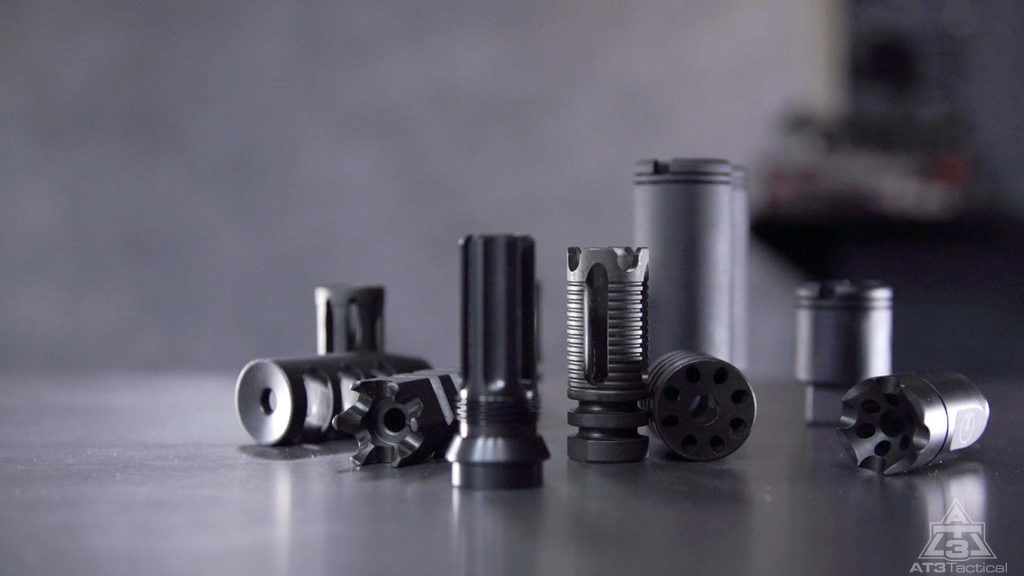
Transform your AR from mild to wild with more AT3 muzzle device content:
The AR-15 Lower Receiver Assembly
The lower receiver is the key part that the ATF considers the actual “firearm” portion of an AR-15. Lowers contain the trigger and fire control components that enable the rifle to shoot.
Forged and polymer AR-15 lowers are common, but billet-machined aluminum lowers offer enhanced rigidity and customization. All lower receivers form the heart of your build, housing the essential fire control group that gives your rifle its shooting capabilities.

Master the beating heart of your AR build with our more in-depth lower-receiver content:
AR-15 Lower Parts Kits
Inside the AR-15 lower receiver, you’ll find an assortment of pins, springs, and other parts that are used for the operation of the weapon – this includes the trigger, safety, magazine release, pivot pin, takedown pin, and more.
Other upgrades include ambidextrous parts like safety selectors or bolt catches – making it easier for you left-handers to operate your AR.

AR-15 Triggers
A quality trigger improves accuracy through a clean, smooth pull. Common mil-spec triggers work, but upgrading is popular for enhanced precision. Drop-ins from CMC or Rise Armament offer tunable performance at a reasonable price. Don’t overthink it – a new trigger gives your shooting a serious upgrade.
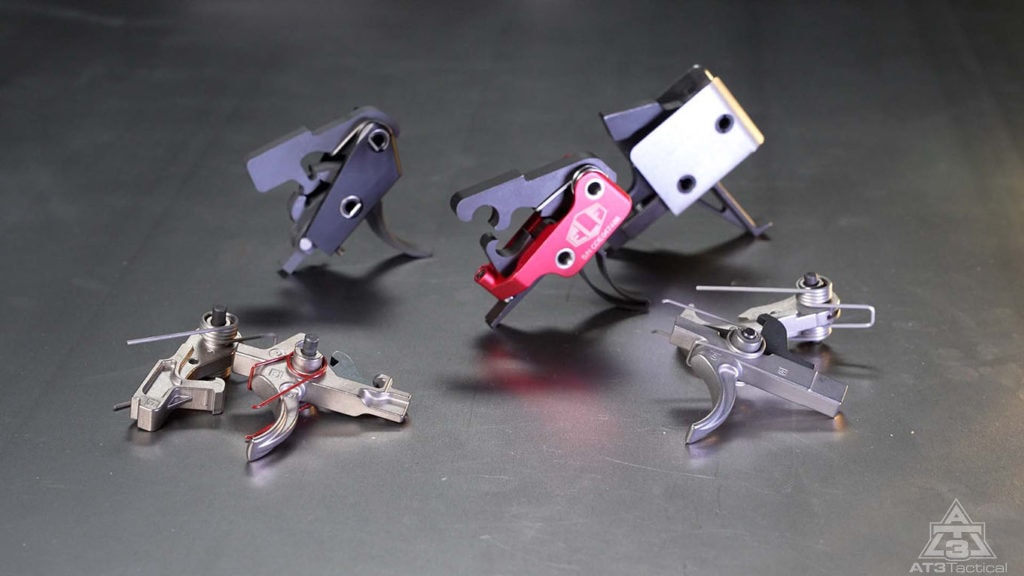
Keep enhancing your savvy on the click portion of the Click/Boom ratio:
AR-15 Buttstock
The buttstock serves to stabilize and guide the bulk of the recoil. Today most AR-15s have adjustable stocks, which are handy for changing the ergonomics of the rifle and collapsing the rifle for easy transport.
A good stock could be lightweight, have storage, or have multiple points of adjustment. Magpul’s Carbine stock is a very popular option that even comes stock (pun intended) on a bunch of off-the-shelf rifles.

Reinvent your AR’s ergonomics with our stock upgrade insights:
AR-15 Buffer Tube & Recoil System
The buttstock is attached to the buffer tube (AKA the receiver extension). Beyond serving as a place to put your stock, the buffer tube serves another purpose – it houses the recoil spring and buffer.
Carbine buffer tubes are by far the most common AR-15 option. Rifle-length A2 tubes are the other primary variety. Beyond that, there are technical differences between mil-spec and commercial buffer tubes, but commercial types are quite uncommon today.
For most builders, sticking with a standard carbine or rifle buffer tube will suit your needs. Only those looking for very specific stock compatibility need to worry about the mil-spec versus commercial spec debate.
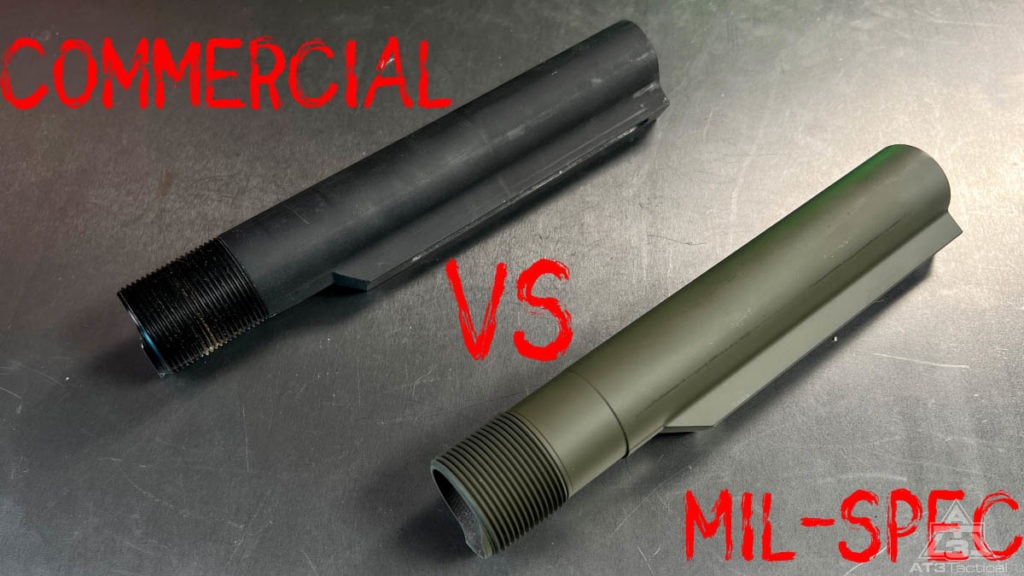
When the rifle fires, the bolt carrier group pushes back into the recoil buffer and spring, which reduces the forces of recoil, for the benefit of your shoulder and your rifle.
There are a bunch of different buffer weights and they are called H1, H2, and H3. These are easily changed out to suit your AR needs. Some need a heavier buffer and some need a lighter one. For those ultimate fine-tuned builds an adjustable buffer is the go-to so all problems can be solved ASAP.
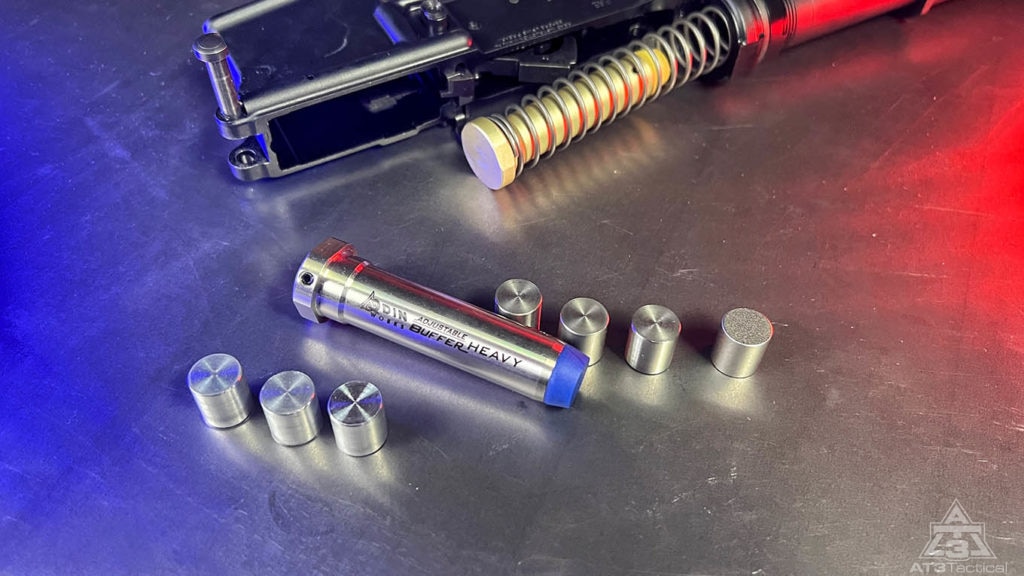
Fine-tune your AR’s rhythm with our buffer system tips and tricks:
AR-15 Pistol Grip
There isn’t much to an AR-15 pistol grip is there? Actually, there are a plethora of styles, features, grip angles, etc. There are pistol grips with storage in the base, grips with a less exaggerated angle, smooth, rubber, sandpaper feeling, and on and on and on.
These days it walks the boundary of an accessory rather than a necessity. The Magpul MOE is an extremely common one and for good reason, but if you want to spice things up check out the Magpul MIAD which helps fit the grip to your hand and has some built-in storage.
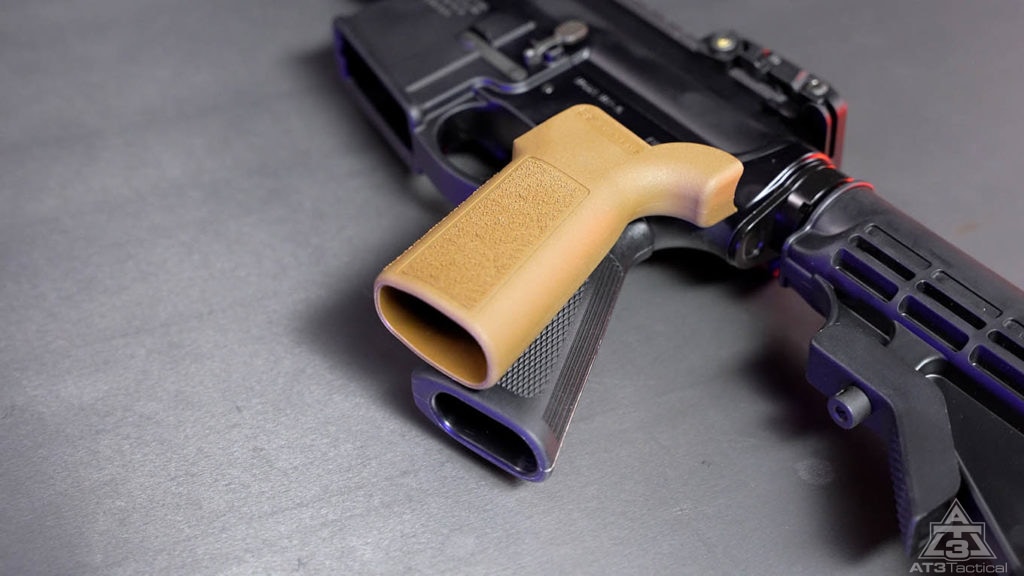
Master the subtleties of grip ergonomics with our in-depth pistol grip content:
AR-15 Magazines
AR-15 magazines might not be the flashy superstar of your AR accessories, but they’re like that trusty sidekick that can make or break the mission.
A good magazine will run like a well-oiled machine and make your build shine, but a bad one likely will cause more headaches than a Monday morning. So, unless you want to become a master at fixing magazine jams, it’s best to invest in reliable ones that won’t let you down.
The hands-down knock-out champ of magazines has to be the Magpul Pmag but if you aren’t into the plastic stuff make sure to check out Duramag. Still, need help figuring out the perfect AR magazine for your build? Check out our guide to Choosing the best magazine for you.
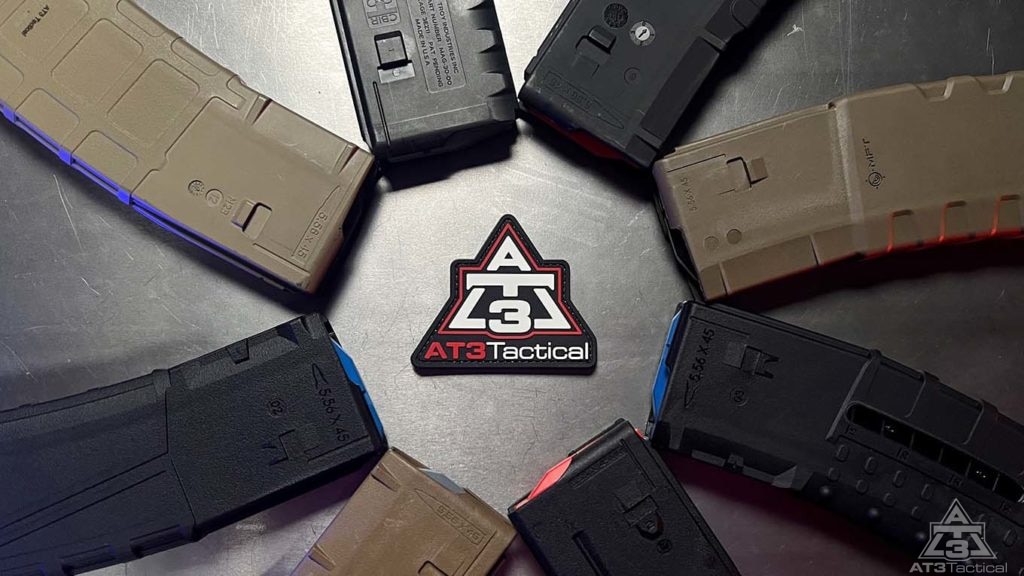
Step up your AR’s firepower potential with our magazine secrets:
Enhancing Your AR-15 With Optics
AR-15 Optics are a must-have enhancement in almost every way you look at it. Faster target acquisition, magnification, accuracy at longer range, etc. Without them, you are stuck with an “optics-ready” setup which is basically useless.
AR-15 Backup Iron Sights
Backup iron sights do not need to be solely for “backup”. They can be and are often intended to be a primary optic in a rifle setup. Back-up sights specifically are very important to use an AR-15 as a defensive weapon.
Optics can fail and batteries can go dead. You always want to be able to make accurate shots, no matter the situation.

Hone your fundamentals with our in-depth iron sights content – take your skills back to basics:
- Absolute Vs Lower 1/3 Co-witness Sights -The Ultimate Guide
- Building an AR-15 or AR-10. What Parts Are Compatible?
- The Best AR-15 Iron Sights
- How to Build a Home Defense AR-15
- What to Look for When Choosing AR 15 Backup Iron Sights
- AT3 Tactical Donates 45-Degree Iron Sights to Marine Scout Sniper Platoon in Afghanistan
AR-15 Reflex Sights
Reflex sights have surged in popularity over old-school tubed red dots. The compact design, lightweight, and broad sight picture up their allure. Even better, most reflex sights work on rifles OR pistols for ultimate flexibility.

AR-15 Red Dot Sights
When considering a red dot sight, the image that typically comes to mind is that of a “tube-style” sight. This association likely stems from the familiar comfort of looking through a traditional scope tube.
Tube-style models still have their place though. Their enclosed design makes them super rugged and durable – perfect for ARs facing harsh conditions.

AR-15 Holographic Sights
Holographic sights, though they bear a resemblance to red dot sights according to our common understanding, function with certain deviations from traditional red dot optics.
They utilize a laser diode and reflective surfaces to produce a holographic reticle that appears to float. Why pick a holographic sight over a red dot or reflex sight? Holographic sights provide some distinct advantages with their technology that minimizes parallax distortion and visual issues like astigmatism. Additionally, holographic sights allow the user to focus on both the reticle and target simultaneously, providing an easier viewing experience.

Unlock rapid target acquisition with our AT3 AR-15 red dot optics content:
- Using a Reflex Sight on a Pistol and an AR-15
- The Optics-Ready Pistol Bible
- Where Should I Mount My Red Dot Sight on My AR-15?
- How to Choose a Red Dot – A Buyer’s Guide to AT3 Optics
- AR-15 Red Dot Sights and Astigmatism
- How to Zero a Red Dot
- Red Dots vs Red Dot Magnifiers vs LPVOs vs Traditional Scopes
- Choosing the Best AR-15 Red Dot Sight for Your AR-15
AR-15 Magnifiers
Red dot sights excel up close, but sometimes you need a bit more range. That’s where magnifiers come in handy. These supplemental lenses enhance your red dot’s versatility. With the flip of a magnifier behind your red dot, you can toggle between CQB-ready speed and magnified precision for intermediate-range shots.
While magnifiers require slightly slower target acquisition, they expand your options. No need to choose exclusively between close-quarters agility and reach—with the right gear, your AR can handle both.
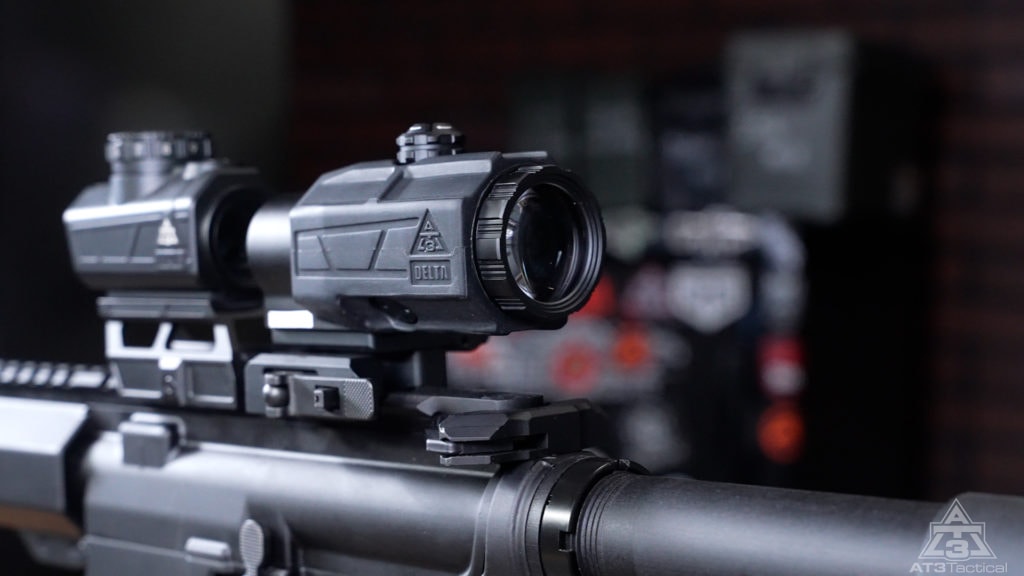
AR-15 Scopes
Scopes specifically engineered for AR-15 rifles will typically be LPVOs (low-powered variable optic). This is because they mate the perks of a red dot with the perks of a scope. Traditional scopes work just fine on AR-15s but they may be a little too long or a little too tall in some cases.

Unleash your AR’s long-range potential with our scopes and LPVO pro tips – take precision shooting to the next level:
AR-15 Accessories & Attachments for Customization
Customizing your AR-15 is half the fun. The possibilities are endless thanks to the platform’s modularity.
Add bipods for stability, new grips for control, slings for carrying, lights for low-light ops – the list goes on.
These attachments let you tailor your rifle to fit your needs and style. An AR is like a canvas, and accessories are your paint. Get creative and join the passion-filled community that loves building kick-butt firearms!
AR-15 Bipods
AR-15 bipods check all the boxes. They supply stability for accuracy, whether you’re prone or on the bench. With your rifle securely planted on a barricade or the ground, bipods reduce movement for enhanced precision.
No more wavering during long-range sessions. Bipods minimize fatigue too by literally taking the weight off your shoulders. Stability, accuracy, ergonomics – bipods bring it all together to make your AR a steady, precise shooting machine.
In recent years Magpul came out with a very simple minimalist bipod setup and it has found a large following.

Plant your AR on solid ground with more expert-curated bipod content:
AR-15 Front Grips
A front vertical grip or angled grip, or even a hand stop, serve as useful accessories for AR-15 rifles, offering improved control and handling during shooting.
These grips offer increased stability, reducing muzzle rise and recoil, which can aid in maintaining target acquisition and overall accuracy.
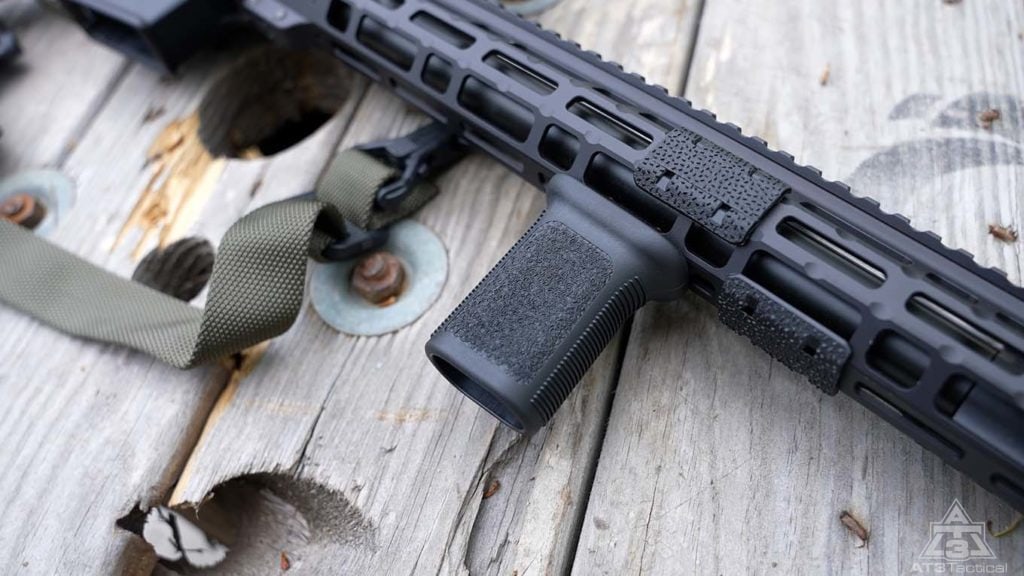
Get a grip on enhanced rifle control with our in-depth front grip articles:
AR-15 Slings
Primarily, a sling allows the shooter to comfortably carry and transport the rifle while keeping their hands free. It aids in weight distribution, reducing fatigue during extended periods of carrying.
Additionally, a sling enables quick and secure transitions between shooting positions, enhancing overall weapon control and maneuverability.
By far the Magpul MS4 is one of the most beloved slings out there. Another popular strictly two-point sling option is the Blue Force Gear Vickers 2-Point Combat Sling.
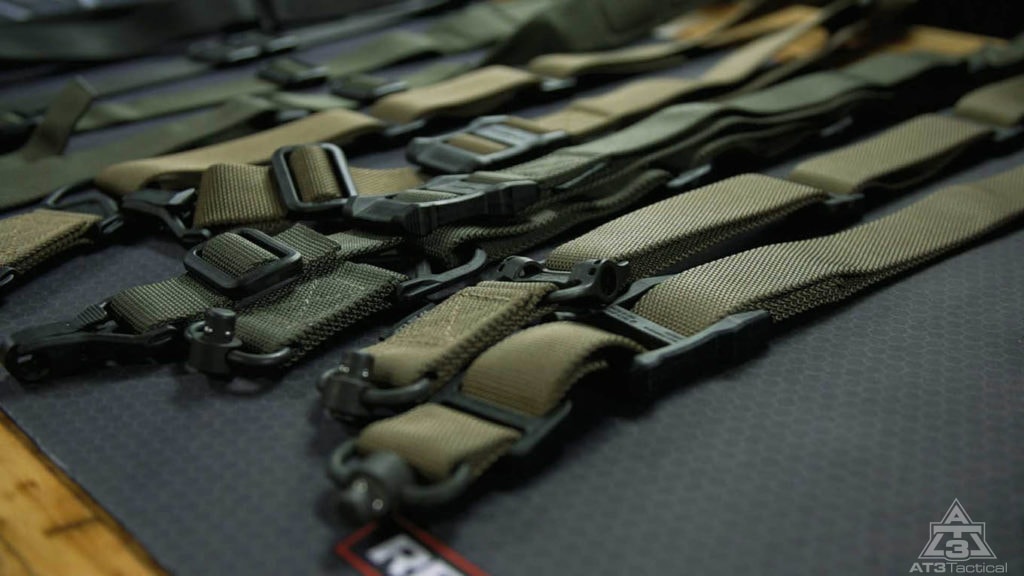
Step up your AR game with enhanced comfort and limitless maneuverability from more of our sling content:
AR-15 Flashlights & Lasers
Flashlights and lasers unlock an AR-15’s potential for tactical and defense use. Quality lights can illuminate your surroundings, reveal threats, and provide you with faster target engagement when it counts
Lasers double down on rapid target acquisition, providing a visible guide to your bullet’s intended path, though don’t rely on them completely. They are to be used as a frame of reference, sort of a “your bullet will land somewhere around here”. No Hollywood BS where a laser is always sighted in perfectly at every distance.
Bottom line: Good lighting is crucial for assessing and engaging targets precisely in low-light conditions.
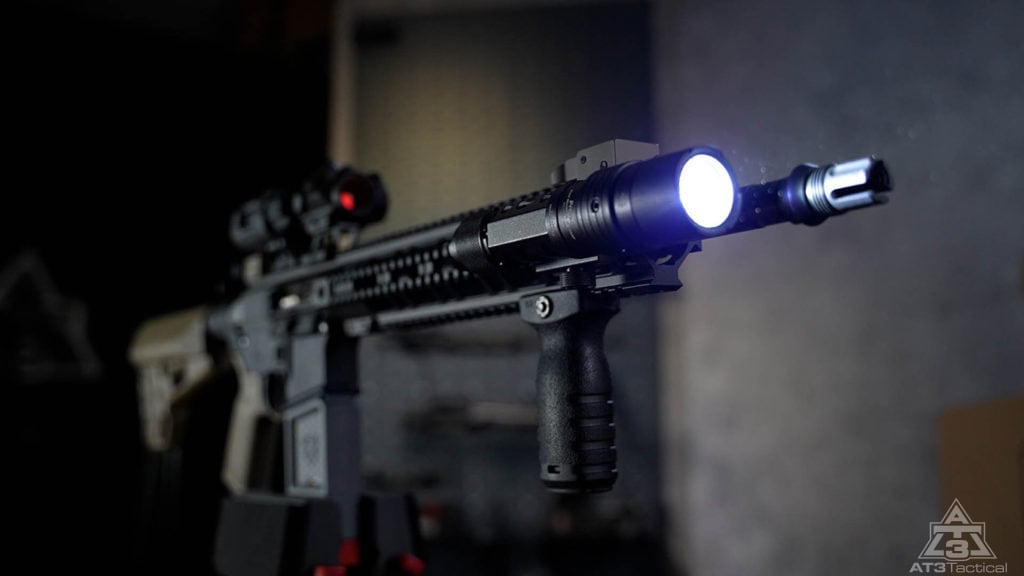
For more AT3 flashlight content check out our video!
AR-15 Conversion Kits
The primary purpose of a .22 conversion kit is to provide a cost-effective and versatile training solution. BUT they are loved and sought after for the fun that goes with high volume affordable shooting.
.22 LR conversion kits allow AR-15 owners to switch their rifles to fire inexpensive .22 LR rounds. This provides cost-effective practice with the same ergonomics and handling as shooting standard 5.56 ammo. Benefits include cheaper ammo costs, training newcomers with nonexistent recoil, and extended sessions improving marksmanship.
Conversion kits have a reputation for being finicky but this is usually due to the poor quality of 22 LR ammo. One of the most reputable and reliable .22 conversion kits on the market is made by CMMG.
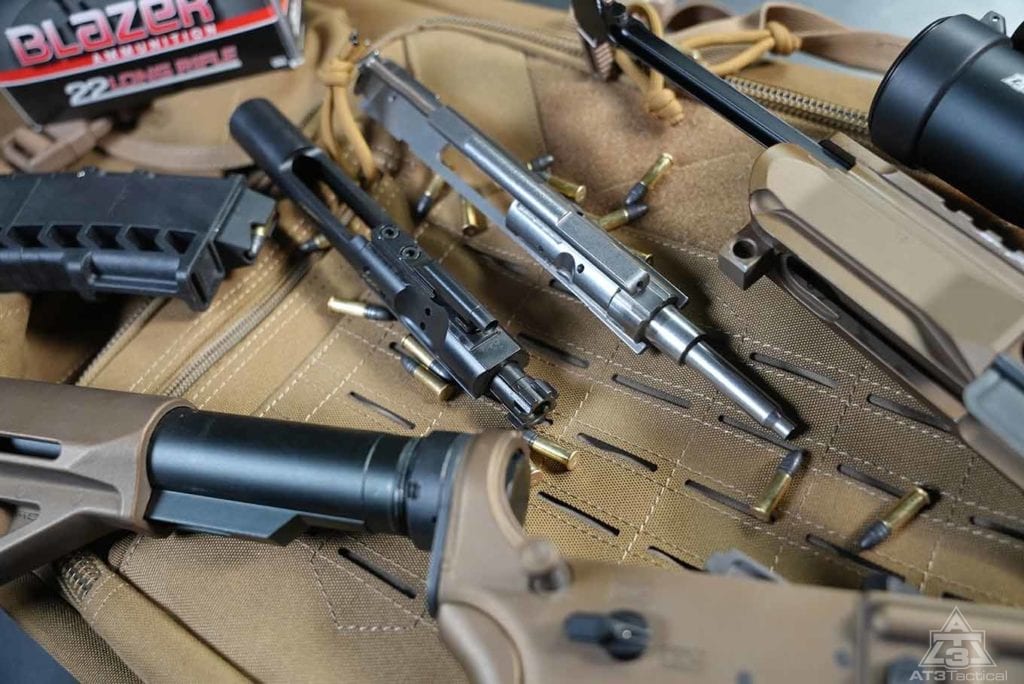
More AT3 .22 Conversion Kit Content: CMMG Conversion Kit Update
Beyond AR-15 Accessories
There’s a lot more to customize your AR-15 beyond accessories. Some hardly cost you a dime, others are just best practice. The point of owning an AR-15 is 100% to make it your own. Get in there and try some things!
- AR-15-Lovers Gift Guide
- Top 10 Questions about AR-15s Answered
- Your Guide to Building an AR-15
- Your Guide to AR-15 Cleaning & Maintenance
- The Best AR-15 Calibers
- Understanding Headspace in an AR-15
- How To Paint An AR-15
- The Best AR-15 Upgrades
- Using an AR-15 for Hunting
- Must-Have Tools For AR-15 Builds
- How to Remove and Change a Dust Cover
- How to Buy a Gun – A Step-By-Step Guide for First-Time Buyers
Origins of an Icon: AR-15 History
In 1955, Eugene Stoner, Chief Engineer at Armalite, eventually created the original AR-15. He first started with AR-10 prototype rifles. Although similar by today’s standards, they had a “Steampunk” appearance with brown-sh colored plastics, vent slots, and a concealed charging handle. Just two years later, the AR-10 was downsized and chambered for the popular .223 Remington varmint cartridge, resulting in the birth of the AR-15.

Initially, the AR-15 was nothing more than a scaled-down version of the AR-10 but eventually surpassed it in popularity. This caught the attention of the US military, leading larger-scale manufacturer, Colt, to take over the AR-15’s development as Armalite couldn’t keep up with demand nor afford to continue. This resulted in the M16, M4, and so on.
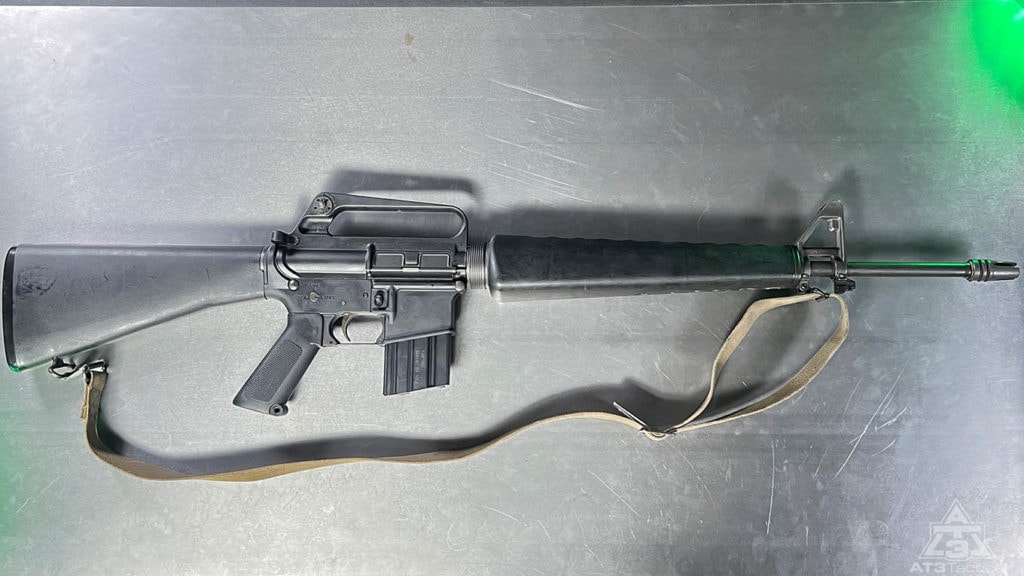
More AT3 AR-15 Historical Content: M4 vs AR-15 vs M16 – The Ultimate Guide to AR-15 Types Plus A1, A2, A3, A4 M16 Variants
AR-15 Operation Manual
When it comes to America’s favorite rifle there can be a lot of misinformation out there. If you need assistance with a product, have any questions, or just want to reach out, please feel free. Speaking of free if you want an official manual on the AR-15 platform check out this FREE Army Service Manual!
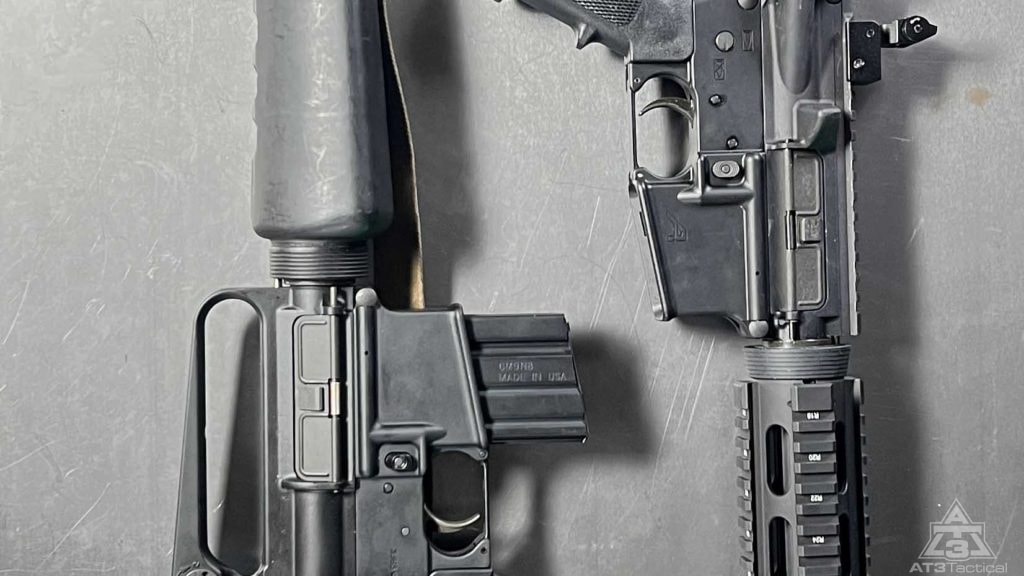
We at AT3 Tactical just want to lend our thanks to anyone who tunes in for the AT3 Blog and YouTube channel. It is much appreciated and we are happy to continue to churn out quality and helpful content. It is an honor to be of service. Please let us know if you have any questions in the comments below. Be safe out there and we will catch you next time!
FAQs
The short answer is no they do not. Your average run-of-the-mill 5.56 AR-15 will not kick much more than a 22 LR. It entirely depends on the cartridge that the AR is chambered in as well as the size of the package. If you have an AR pistol in a larger caliber it will likely kick a bit.
No, they do not. The M16 and M4 rifles are in the same family and were influenced by the commercial AR-15 but the US military does not use AR-15s. There are probably some small exceptions.
It can be yes. Typically if the AR-15 is in a smaller more maneuverable configuration and in a cartridge such as 300BLK it is suited for home defense. 5.56 works just fine too but it has a habit of over-penetrating so in a home environment a bigger or at least slower bullet is ideal.
Yes! The AR-15 platform is great for beginners. They do have a lot of buttons and things poking out every which way so it could be a little overwhelming but it is low recoiling, easy to manipulate, and highly adjustable to the shooter.
Yes! They are very easy to operate. They have the potential to be a little overwhelming since they have a lot of controls but most are passive and not constantly being used.
One Last Tip
If there’s anyone that knows the AR-15 platform, it’s the US military. As a special offer for our readers, you can get the Official US Army Manual for AR-15/M4/M16 right now – for free. Click here to snag a copy.

